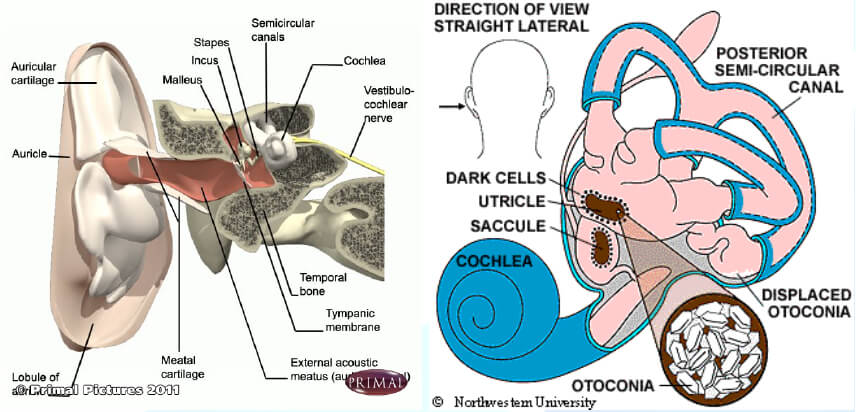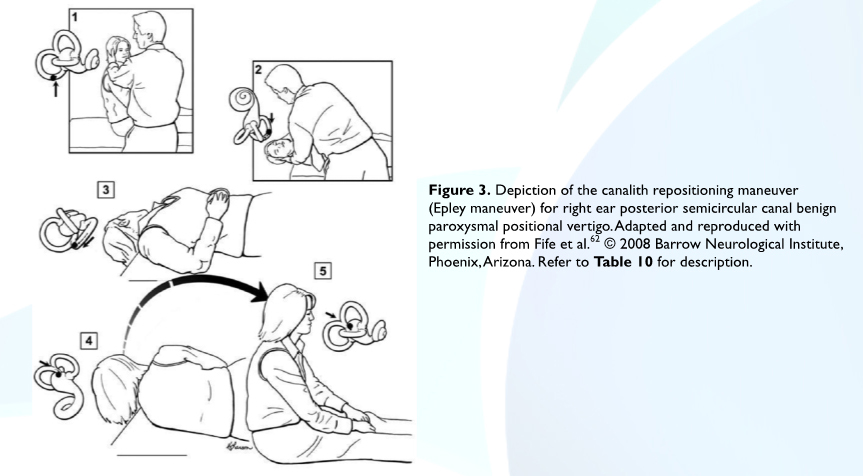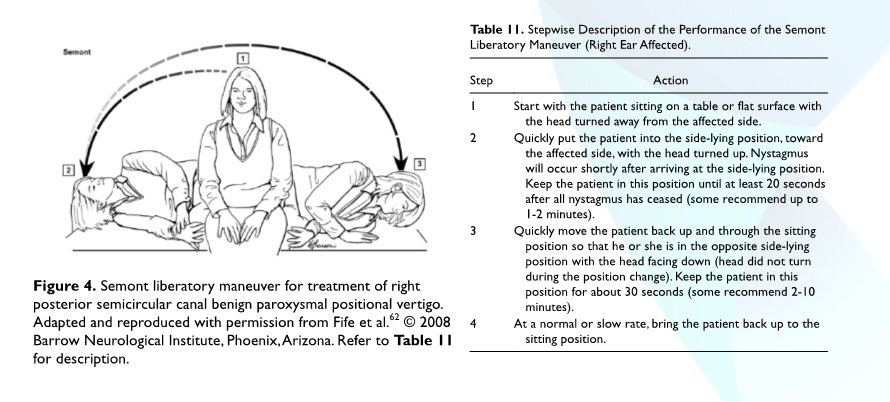Who is this information for?
This information is for patients, families and carers following a diagnosis of benign paroxysmal positional vertigo (BPPV).
What is BPPV?
- BPPV is a condition of the inner ear which can cause intense episodic dizziness (vertigo), especially in older people.
- Benign means that it is not due to a serious cause.
- Paroxysmal means that the episodes of dizziness are brief with a rapid onset and offset.
- Positional means that the symptoms may be triggered by certain positions. In the case of BPPV, certain positions of the head may trigger symptoms.
- Vertigo is dizziness with a spinning sensation. You may feel as though the world is spinning around you and you may feel very unsteady
What are the symptoms of BPPV?

- The main symptom is intense dizziness (vertigo) which typically lasts for 10-20 seconds, but no longer than a minute. It then goes away completely. The vertigo is triggered by a change in head position. Read more information about Dizziness
- With each episode of vertigo you may feel sick (nauseated) but it is not common to vomit. The nausea may last an hour or so, even though the vertigo lasts just seconds.
- Between episodes of BPPV you may feel well.
- In most cases, the symptoms resolve within several weeks or months
What happens in BPPV?
- It is thought that BPPV is caused by movement of one or more tiny calcium carbonate particles (otoconia) that float in the fluid of the inner ear (labyrinth). Particles cause no problem if they are in the vestibule part of the labyrinth, problems may occur if they move into the semicircular canals.
- The posterior semicircular canal is the canal usually affected. When your head is still, the particles sit at the bottom of the posterior canal, but when the head moves in a certain direction, they get carried along with the flow of fluid

- The particles brush along the delicate hairs that line the semicircular canal. This in turn sends messages down the vestibular nerve. These extra nerve messages sent from the affected ear conflict with the normal messages sent from the other unaffected ear. The brain becomes very confused and reacts by causing intense dizziness.
Will I require any tests to confirm BPPV?
- Your clinical symptoms may suggest that you have BPPV.
- To confirm the diagnosis, your doctor may perform a test called the Dix-Hallpike manoeuvre. This will involve you sitting on a couch, and the doctor will then lie you back and move your head in certain directions. These set movements usually trigger an episode of intense vertigo if the diagnosis is BPPV.
What treatment is available for BPPV?
- Several treatment options are available which include
- The Epley manoeuvre: this is a simple manoeuvre which may be performed by the doctor in order to reposition the particles (otoconia) from the posterior semicircular canal into the vestibule where they settle and cause no symptoms. It is done by a series of head movements.Following a successful Epley manoeuvre the following recommendations are advised in order to allow the otoconia to settle into their new position in the vestibule:
- Do not lie flat for 48 hours – sleep sitting in a chair.
- Do not lie on the affected side for one week.
- Try and avoid bending over for a week – e.g. Stooping to tie shoe-laces, or pick up items from the ground.

- Alternatively, a Semont manoeuvre may be performed if an Epley manoeuvre cannot be undertaken


- Sit on the edge of the bed and turn your head slightly to the left (approximately 45 degrees)
- While maintaining this head position, lie down quickly on your right side so that the back of your head is resting on the bed. Wait for 20 to 30 seconds or for any dizziness to resolve.
- Sit up straight, and again wait for 20 to 30 seconds for any dizziness to resolve.
- Turn your head slightly to the right and repeat the sequence in the opposite direction.
- Repeat for 10 minutes (5 or more repetitions to each side). Perform the exercises 3 times daily if possible.
- Symptoms of dizziness should be reproduced by the exercises if any benefit is to occur. If the exercises are done regularly, the symptoms should resolve over a period of several days in most cases.
- No Treatment: If the Epley manoeuvre or Brandt-Daroff exercises are not successful, or not done, BPPV usually goes away on its own after several weeks or months without any treatment.
- Surgery: Surgery is rarely needed. An ear specialist will advise of potential surgical options if required.
How do you keep safe while you have BPPV?
- You need to stop driving if you get sudden, unexpected and disabling attacks of dizziness.
- You should inform your employer if dizziness could pose a risk to yourself or others in your job.
- To avoid falls around the home, get out of bed slowly and avoid jobs around the house which involve looking upwards
Concerns or questions?
You can contact your ENT Specialist at the Melbourne ENT Group (MEG):
- Phone: 1300- 952-808
- Email: admin@melbentgroup.com.au
- Website: www.melbentgroup.com.au
Your GP is also the best contact for ongoing care and concerns. Download PDF